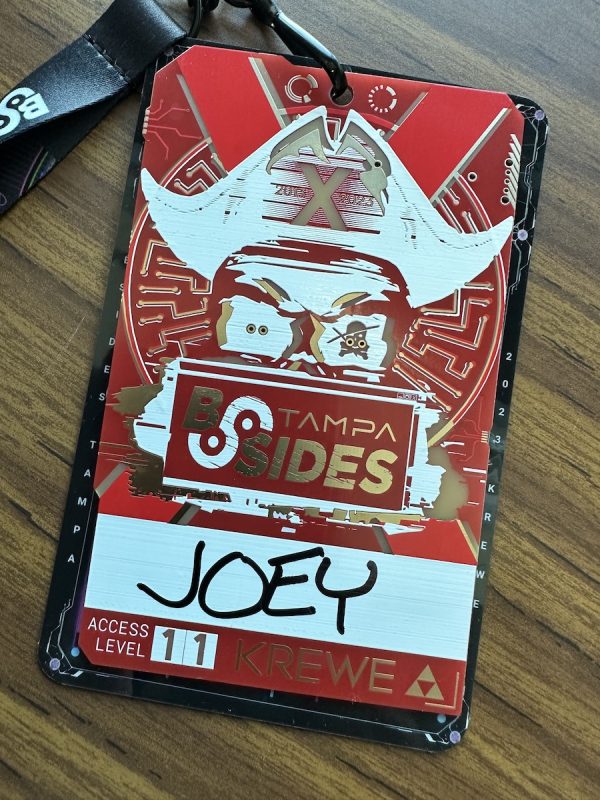| Event name and locale | Group | Time |
|---|
| Grow Your Business with focused Referral Networking | BNI Tampa -Referral based networking | 7:30AM – Wednesday, Mar. 20 |
| St Pete Networking Breakfast at the Hangar Meet St Pete’s Top Pro’s All Weclcome | Young Professionals Networking JOIN in and Connect! | 7:30AM – Wednesday, Mar. 20 |
| Networking at The Hanger Restaurant & Flight Lounge! | Tampa Bay Networking and Events | 7:30AM – Wednesday, Mar. 20 |
| Tampa Highrisers Toastmasters | Toastmasters District 48 | 7:45AM – Wednesday, Mar. 20 |
| Living with Autonomous AI | Data, Cloud and AI in Tampa | 8:00AM – Wednesday, Mar. 20 |
| 1 Million Cups – Orlando Weekly Meetup | 1 Million Cups – Orlando | 8:30AM – Wednesday, Mar. 20 |
| FCCP Morning Photowalk to Eagle Lake Park, Largo, FL | Florida Center for Creative Photography | 8:30AM – Wednesday, Mar. 20 |
| Career Transition & Job Seeker Networking & Support Meeting – In Person Meeting! | Career Rebound – New Job or Career Search for Professionals | 9:00AM – Wednesday, Mar. 20 |
| Craig Park in Tarpon Springs | Suncoast Drone Club | 9:00AM – Wednesday, Mar. 20 |
| Midjourney Prompt Help & Advanced FAQ with A.I. Creative Compass! | Midjourney A.I. Art Meetup Group | 11:00AM – Wednesday, Mar. 20 |
| 6 smart ways to spot login attacks | ManageEngine’s Cybersecurity Meetups | 11:00AM – Wednesday, Mar. 20 |
| In Person Networking BRANDON! Just Love Coffee Cafe – Brandon FL | Professional Business Networking with RGAnetwork.net | 11:15AM – Wednesday, Mar. 20 |
| Sun City Center Professional Business Networking Lunch ~ All Welcome | Business Professionals of Pinellas, Pasco & Hillsborough | 11:30AM – Wednesday, Mar. 20 |
| Carrollwood Networking Lunch! Join us and win! | Tampa Bay Networking Meetings and Mixers | 11:30AM – Wednesday, Mar. 20 |
| Networking at Glory Days Grill! | Tampa Bay Networking and Events | 11:30AM – Wednesday, Mar. 20 |
| Brandon Networking Professionals Networking Lunch | Tampa Bay Business Networking Meetings & Mixers | 11:30AM – Wednesday, Mar. 20 |
| Carrollwood Professional Networking Lunch Wednesday All Welcome JOIN us | Professional Business Networking with RGAnetwork.net | 11:30AM – Wednesday, Mar. 20 |
| Brandon Business Professionals Just Love Coffee | Young Professionals Networking JOIN in and Connect! | 11:30AM – Wednesday, Mar. 20 |
| Brandon Business Professionals IN Person!!!! | Tampa / St Pete Business Connections | 11:30AM – Wednesday, Mar. 20 |
| Networking at Just Love Coffee! | Tampa Bay Networking and Events | 11:30AM – Wednesday, Mar. 20 |
| NPI North St. Pete Networkers Chapter – Exchange Qualified Business Referrals | Network Professionals Inc. of South Pinellas (NPI) | 11:30AM – Wednesday, Mar. 20 |
| Business Networking Lunch | Bradenton/Sarasota Networking Meetings and Mixers | 11:30AM – Wednesday, Mar. 20 |
| How to Optimize Fundraising Efforts through Strategic Marketing Techniques | Tampa Startup Founder 101 | 1:00PM – Wednesday, Mar. 20 |
| Online Event: Shut Up & Write!® Your Life Story (on Zoom) | Shut Up & Write!® St. Petersburg | 1:00PM – Wednesday, Mar. 20 |
| Revolutionizing Predictive Models with Generative AI-Driven Feature | Gen AI Tampa | 2:00PM – Wednesday, Mar. 20 |
| Inspiring Authors & Book Immersion Meetup | Lady Lake Memoir Writing Meetup Group | 2:00PM – Wednesday, Mar. 20 |
| Playing Games in the Alley | The Tampa Chapter of the Society for the Exploration of Play | 5:00PM – Wednesday, Mar. 20 |
| Wednesday Night Gaming | Brandon Boardgamers | 5:00PM – Wednesday, Mar. 20 |
| Bay pines toastmaster’s hybrid meeting | Bay Pines Toastmasters | 5:15PM – Wednesday, Mar. 20 |
| A look at Diversity Equity & Inclusion in 2024! | Career Success Academy | 5:30PM – Wednesday, Mar. 20 |
| Felicitous Game Night w/Heritage Dim Sum | Tampa Game Nights | 5:30PM – Wednesday, Mar. 20 |
| Wednesday Board Game Night | Tampa Gaming Guild | 5:30PM – Wednesday, Mar. 20 |
| Felicitous Game Night w/Heritage Dim Sum | Tampa Bay Gaming: RPG’s, Board Games & more! | 5:30PM – Wednesday, Mar. 20 |
| A look at Diversity Equity & Inclusion in 2024! | Tampa Cybersecurity Training | 5:30PM – Wednesday, Mar. 20 |
| A look at Diversity Equity & Inclusion in 2024! | Front End Creatives | 5:30PM – Wednesday, Mar. 20 |
| A look at Diversity Equity & Inclusion in 2024! | Tech Success Network | 5:30PM – Wednesday, Mar. 20 |
| Introduction To Composition For Photographers! Techniques To Improve Your Images | Beginner Hobby and Amateur Photographers Of Tampa St Pete | 6:00PM – Wednesday, Mar. 20 |
| Casual Commander Wednesdays | Sunshine Games | 6:00PM – Wednesday, Mar. 20 |
| Digital DeLand Monthly Meeting | DigitalDeLand | 6:00PM – Wednesday, Mar. 20 |
| Board Game Night | Critical Hit Games | 6:00PM – Wednesday, Mar. 20 |
| Great Big Trivia Wednesdays @ Terra Ceia Bay Country Club Palmetto 6-8PM | South Florida Poker, Music & Entertainment Group | 6:00PM – Wednesday, Mar. 20 |
| Dungeons & Dragons One Shot Wednesdays | Clermont Nerd Games | 6:00PM – Wednesday, Mar. 20 |
| Learn to Play Moon River at Meeple Movers Board Game Cafe | Meeple Movers Gaming Group | 6:00PM – Wednesday, Mar. 20 |
| 1st & 3rd Wednesdays – Backgammon Casual Games | Sanford Backgammon Group | 6:00PM – Wednesday, Mar. 20 |
| Monthly Meeting: Focus on Critiques | Prose Society Writers Group | 6:00PM – Wednesday, Mar. 20 |
| TBUX Quarterly Social | Tampa Bay UX Group | 6:30PM – Wednesday, Mar. 20 |
| How to build AI applications with Python and LangChain | Tampa Bay Artificial Intelligence Meetup | 6:30PM – Wednesday, Mar. 20 |
| Virtual Feedback! | We Write Here Black and Women of Color Writing Group | 6:30PM – Wednesday, Mar. 20 |
| Happy Hour for Young Entrepreneurs & Business Leaders | Young Entrepreneurs of America YEA Meetup Group | 6:30PM – Wednesday, Mar. 20 |
| Jewelry laser making | Makerspaces Pinellas Meetup Group | 6:30PM – Wednesday, Mar. 20 |
| Game Night! | Drunk’n Meeples the Social Tabletop (Board) Gamers | 6:30PM – Wednesday, Mar. 20 |
| Skybox Rooftop Bar | Wesley Chapel Fabulous 40s and 50s Food and Fun Meetup Group | 6:30PM – Wednesday, Mar. 20 |
| Woodshop Safety (Members Only) | Tampa Hackerspace | 7:00PM – Wednesday, Mar. 20 |
| CigarCitySec | Defcon813 | 7:00PM – Wednesday, Mar. 20 |
| [Virtual] Tampa Bay Bitcoin Meetup: News, Markets, & Community | Tampa Bay Bitcoin | 7:00PM – Wednesday, Mar. 20 |
| MtG Modern Constructed at Armada Games | Tampa Bay Gaming: RPG’s, Board Games & more! | 7:00PM – Wednesday, Mar. 20 |
| Carrollwood Toastmasters Meetings meet In-Person and Online | Toastmasters District 48 | 7:00PM – Wednesday, Mar. 20 |
| CigarCitySec Meetup | Central Florida CitySec | 7:00PM – Wednesday, Mar. 20 |
| Sales Webinar – Learn The Most Effective Closing Technique | Tampa Small Business Owners – EVERYONE WELCOME | 7:00PM – Wednesday, Mar. 20 |
| Agile Speakeasy: An Open Conversation | Agile Orlando | 7:00PM – Wednesday, Mar. 20 |
| Nerd Night: Board Games and Beer at Deadwords Brewing | Adventures On Tap: TTRPGs and Board Games | 7:00PM – Wednesday, Mar. 20 |
| New Beginnings & Old Rivalries | Central Florida AD&D (1st ed.) Grognards Guild | 7:00PM – Wednesday, Mar. 20 |
| Mastering Communication: A Key to Professional Success | Professionals Meetup For Networking And Social Skillsets | 7:00PM – Wednesday, Mar. 20 |
| Cardfight Vanguard!! OverDress Weekly | Sunshine Games | 7:30PM – Wednesday, Mar. 20 |
| Carollwood Professionals Networking Lunch! | Tampa / St Pete Business Connections | 11:30PM – Wednesday, Mar. 20 |
| Castaways Euchre Club | Castaways Euchre Club | 6:50PM – Wednesday, Mar. 27 |
| Return to the top of the list |































